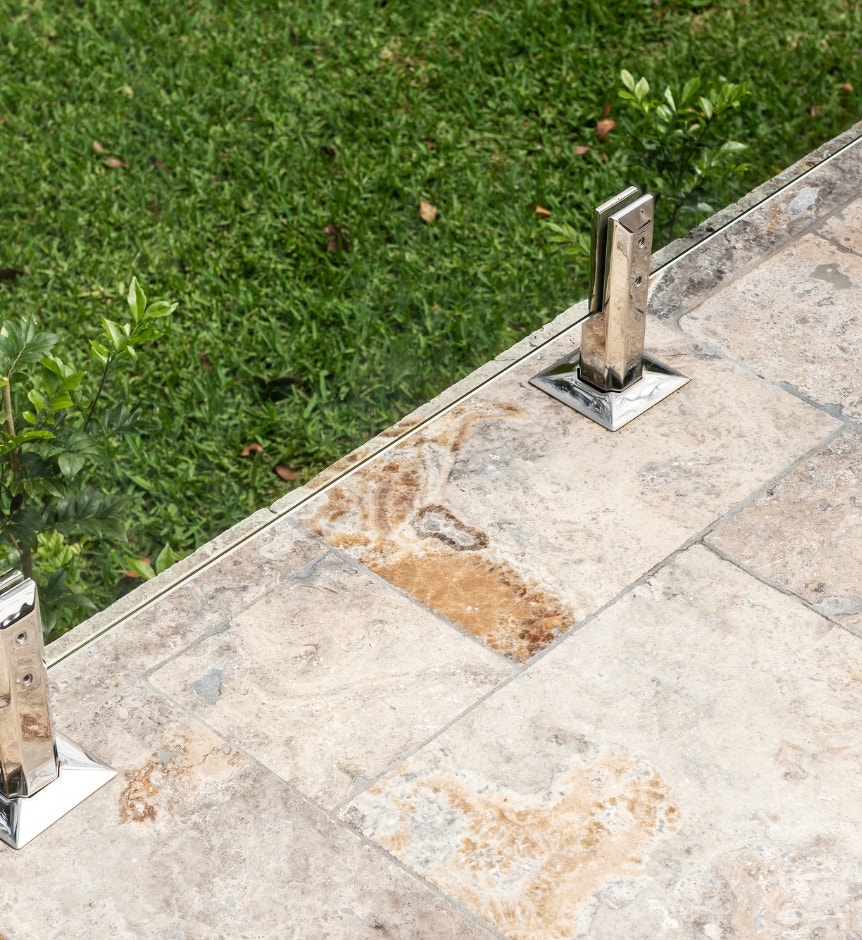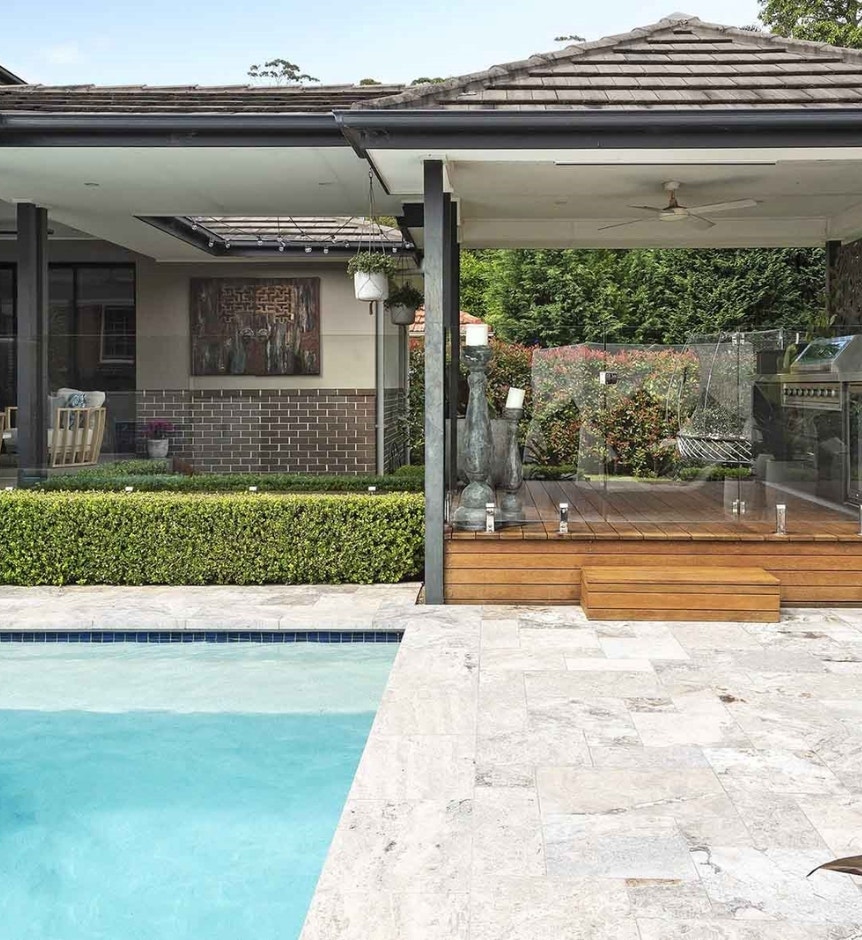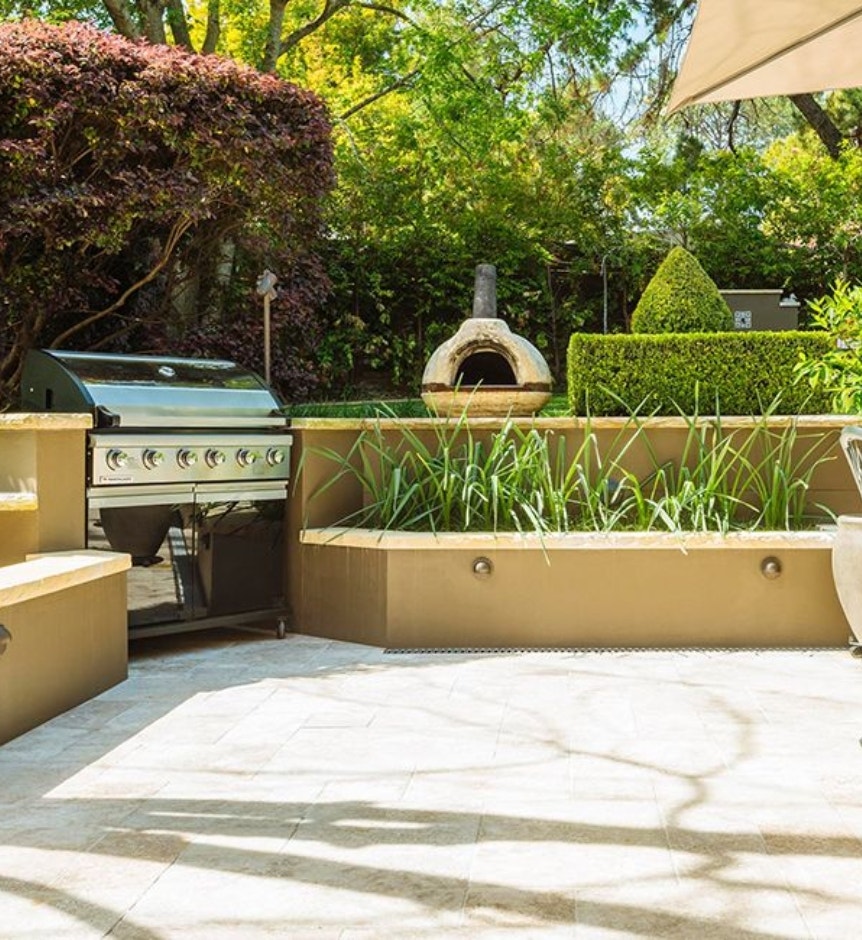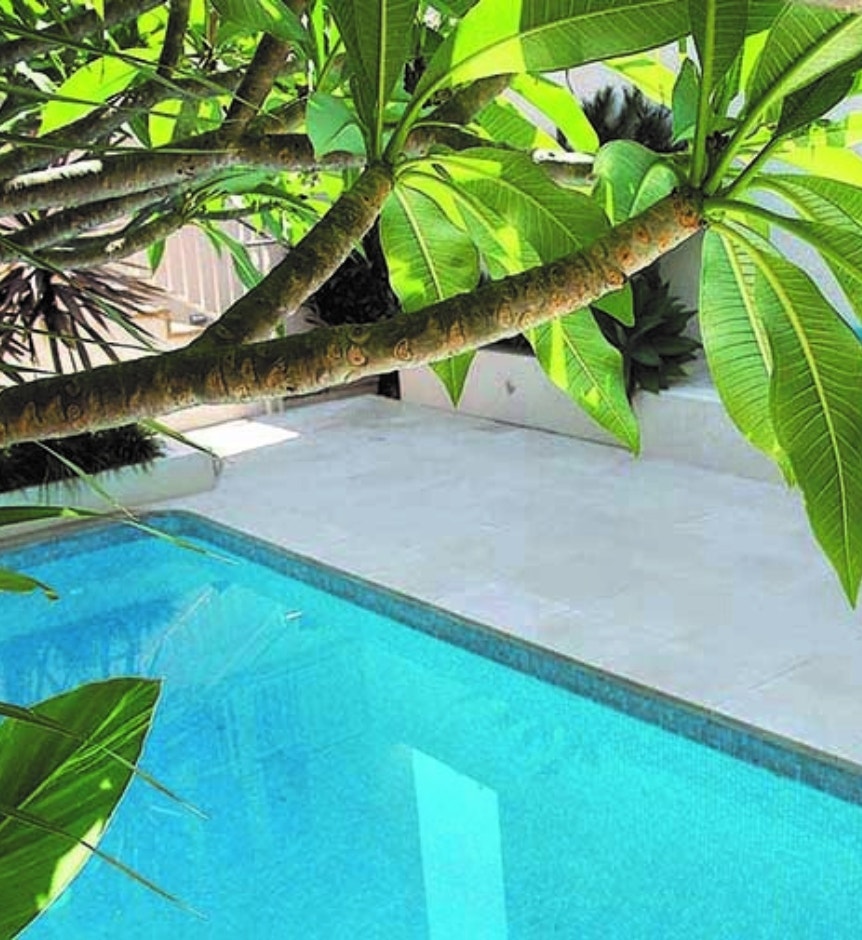Articles
What is Travertine?
15.03.23
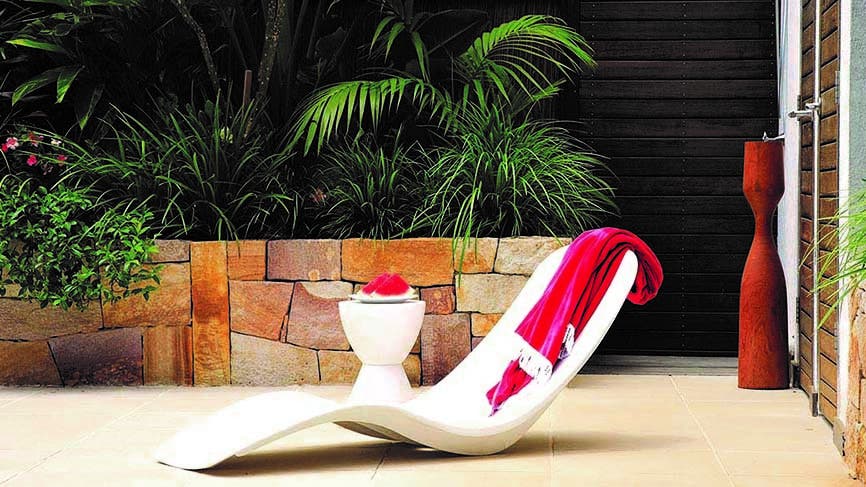
With a delicate, almost marble-like texture and a selection of different elegant earth tones, travertine is a top option for use in many homes and properties across Australia. With a history of use in the architecture and artwork of Italy, Travertine can now be found in tile form all around the world as a viable alternative to artificial materials or more costly marble flooring. Browse our range of travertine tiles online today, or get in touch with our team to learn more about this unique material.
Travertine stone offers a stylish finish to a wide range of areas around the home. While it is on the costly end of the spectrum, the durability and practicality of this unique tile make it a strong choice for natural-looking flooring that stands the test of time. If you prefer high-shine flooring, it is worth noting that regular sealing is required to create the result you are looking for, as the stone's porous nature requires maintenance over time.
This guide covers everything you need to know about travertine, from how they are made to the finishes and colours you can expect when you purchase these unique mountain-born stone floor tiles. Read on to find out more!
HOW TRAVERTINE TILES ARE MADE
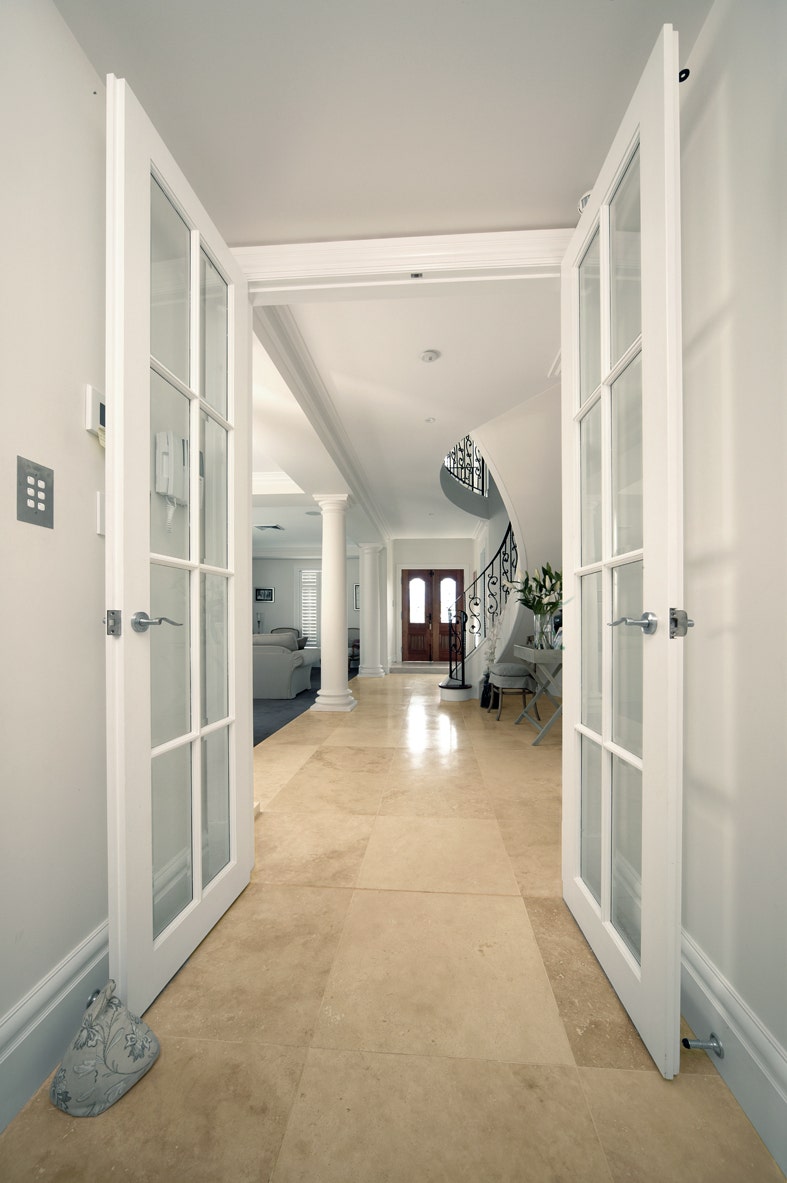
To understand 'what is travertine?', the best place to start is looking at how travertine tiles are made. The origins of travertine tiles go back centuries, with this unique and durable material used around the world for its beauty and unique, antique-looking finishes. So, what is travertine? In its simplest and most organic form, travertine tiles are created from a limestone made under special conditions, formed by deposits in hot mineral springs known as karst. The primary sources for travertine are Turkey, Iran, Peru, Mexico, and Italy, all of which source this unique stone from various quarries and mountains.
Thanks to this natural formation, freshly quarried travertine have an almost honeycomb-like structure with a range of pockets and holes throughout the stone that is often filled on finishing. Depending on the quality of travertine, some stones may require more filling and management than others to be used as floor tiles. The higher the quality, the more natural the stone. Once quarried in large blocks, travertine is then cut down to size and shape, ready for use as flooring tiles.
Before travertine is sold, it is typically graded as first choice, standard quality, or commercial quality, with first-choice holding the highest possible price point. Depending on the demand, travertine will then be treated and finished to provide a specific finish, such as polished, honed or tumbled. We cover the colours and different finishes of travertine in greater detail below.
WHAT FINISHES AND COLOURS CAN TRAVERTINE BE FOUND IN?
As a natural stone, travertine comes in a range of different attractive variations, from a luminous silver-grey to a warm taupe, deep rust, or neutral beige. Much like any other limestone tile, travertine features a wide range of variations that can differ wildly in colour and movement from one block to the next. It's crucial that you decide how you would like your tiles to be laid out before installation, thanks to the complex variation between each individual tile in the same batch.
The versatility of travertine is what lends particular appeal to this stone, but it is just as important to consider the finish and colour of your flooring to produce an end result you'll love. As a porous stone, proper sealing is a must for areas where chemicals may be used, such as by the pool. High-traffic areas may also benefit from a sealed floor to avoid variations in the look of the stone over time. If grip is important to you, picking a matte finish may provide the stability you need without sacrificing the dramatic look that travertine can provide.
If you want more insight into 'what is travertine?' in terms of the different finishes and colours available, we've covered some of the main options available to you below:
Travertine Finishes
Travertine is a versatile stone that comes in a range of different finishes to suit your taste and preferences. Four of the most common classifications for travertine floor tiles include:
Polished
Polished travertine is highly glossy, giving it that marble-like finish that is appealing to many. Polished tiles have been sealed completely and polished to be as smooth as possible, making the surface extremely resistant to staining. Polished finished are also the most slippery option, making this solution less suitable for often wet areas.
Honed
Honed tiles have filling and polish to a lesser degree than the polished finish stone, offering a more matte finish that doesn't have the exact slippery nature as a highly polished surface. This middle ground makes honed travertine tiles a top choice for use in households and in outdoor spaces, thanks to its attractive finish and functionality.
Brushed
Brushed travertine tiles provide a matte, old-world effect achieved through the use of wire brushes for a slightly textured result. Without sealing, brushed surfaces can be highly porous, so this is an essential consideration if you'd like to avoid staining or damage to your costly floor tiles.
Tumbled
Tumbled travertine has an old-world, antique finish that is appealing to those looking for less of a high-gloss look. Rounded corners and edges and an aged appearance provide a vintage feel, while a matte-style finish offers traction and grip. Sealing is needed against stains, and the lack of strong coating can lead to faster wear and tear over time in high-traffic areas.
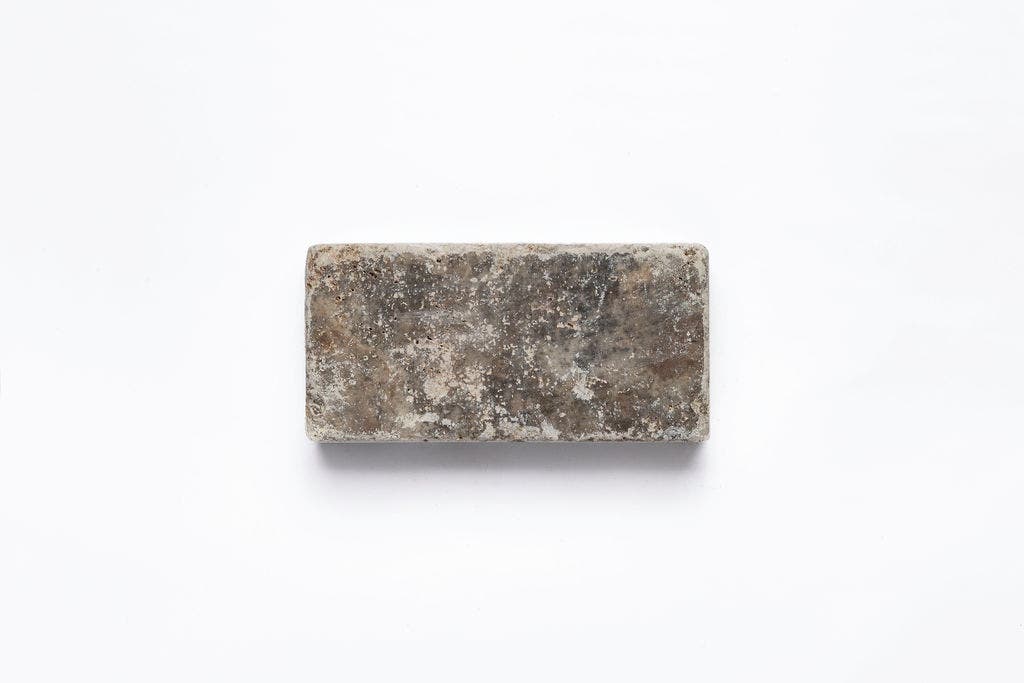
Travertine Colours
In addition to a range of unique finishes, travertine floor tiles are also available in a selection of unique shades and tones. As a natural stone, travertine can see a huge amount of variety, from cool tones to warming shades to suit a range of styles and personal interior décor preferences. Some of the most common colourways you'll encounter include:
Grey
Cool-toned greys and silvery almost-blues are some of the most popular colourways for travertine. These shades lend themselves well as a neutral backdrop in homes looking to tone down the warmth or match their flooring with existing wall colouring and furniture choices.
Taupe
Neutral taupe offers a touch of warmth while maintaining an excellent balance between warmer, rustic shades and cooler, modern tones. Taupe tiles often show off excellent variation in the different colourways and swirls within the stone, making it easier to showcase everything travertine has to offer.
Beige
Warm beige is another popular choice for travertine, bringing warmth that works well with a wide range of architectural styles and interior design choices. Beige tiles work well with the addition of rugs and accessories, ensuring your flooring remains a backdrop to bolder interior design choices.
Rust
Rust-toned travertine is one of the deeper shades available of this particular limestone, providing the ideal stark contrast in outside spaces that lighter shades wouldn't achieve. Rust tones also work well with more delicate variations to add more interest and detail to floors.
Brown
Brown is a true classic, offering a timeless look to travertine that's been used for hundreds of years in Italy and the Mediterranean. Brown tones lend themselves well to more classic architecture choices, adding plenty of warmth and retaining heat well throughout the day.
Natural Variation in Travertine
As with any natural stone, one of the charms of travertine is the intense variations from one tile to the other. Unlike manufactured stone and laminate, no two are the same, ensuring you get a unique finish and result that suits your home perfectly. Part of the joy of travertine is the ability to swap and change tiles to find the pattern that best suits your space, with endless options to suit your preferences. This variation means you likely won't get travertine identical to online pictures, but you will still receive tiles in line with a specific colourway or finish to suit your design choices.
DOES TRAVERTINE NEED SPECIAL MAINTENANCE?
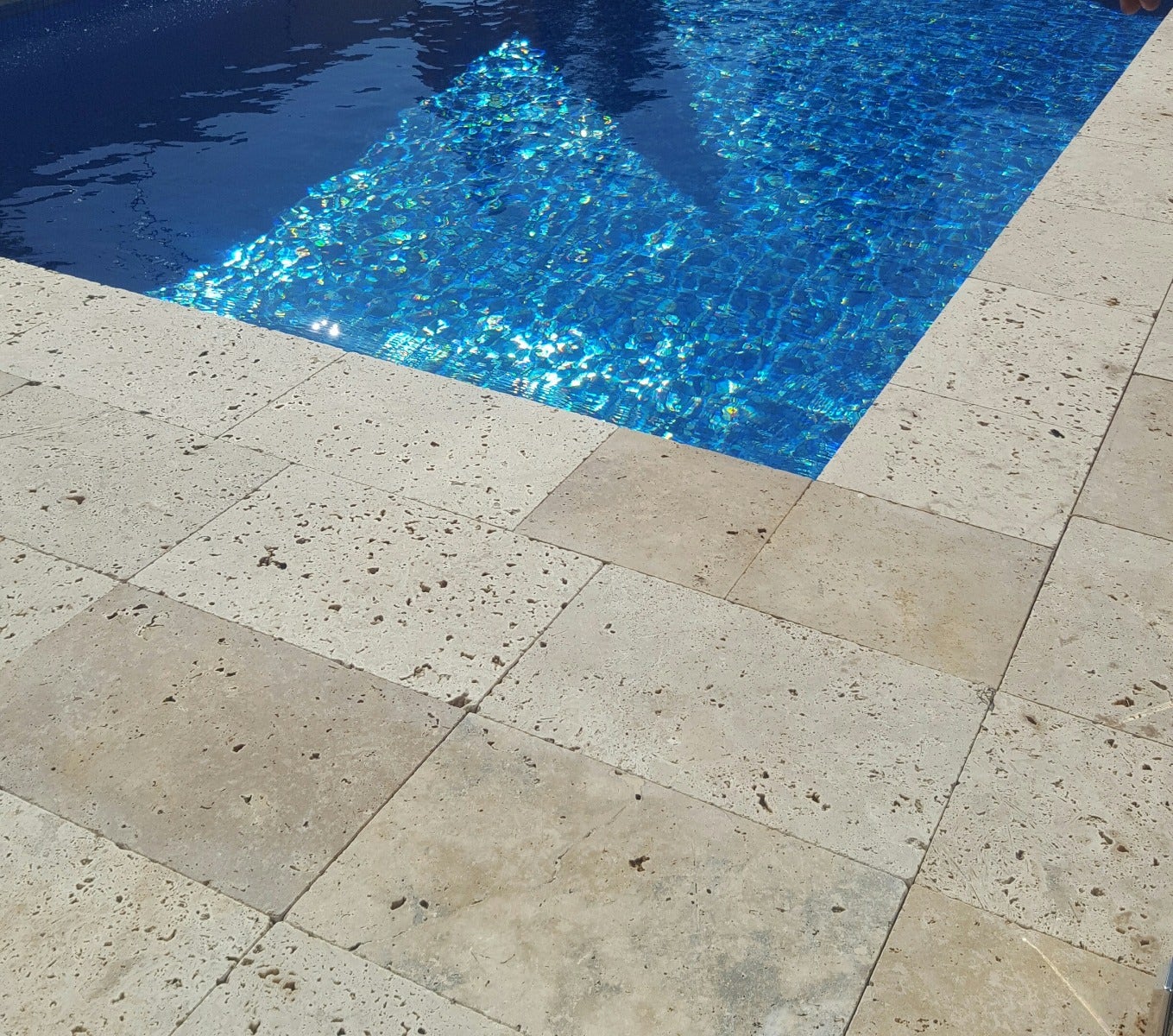
A stone floor is an investment, and you want to ensure you are caring for your travertine floors properly to extend their longevity and keep them looking the way you want. One of the benefits of stone floors is they only look better as they age – but there are a few steps you'll want to take to ensure your travertine stone stands the test of time. Your floor can look how you want it to for decades after installation by keeping up with regular maintenance.
As limestone is porous, it's important to regularly use a penetrating sealer and a barrier surface sealer to prevent liquids and staining materials from reaching the stone itself, as well as to prevent bacteria from breeding in the little pocks and holes. This dual treatment is carried out on the initial installation of the tile, regardless of the finish you opt for, and can be repeated at regular intervals to maintain the effect. Regular upkeep will keep your floor stain-free and looking its best.
If your preference is ultra-glossy travertine, you'll also need to carry out maintenance to keep that shine going. As with any shiny surface, wear and tear from countless footsteps will dull that shine. Regular resealing can ensure consistency in your floors for a high-shine finish that looks brand new. It's worth noting that scratches may be more likely to show on shiny surfaces, while honed or matte tiles will simply look attractively weathered over time.
WHERE DO YOU INSTALL TRAVERTINE?
As a multi-purpose floor tile with hundreds of years of use, travertine is the ideal choice for many areas of the home. If you like the idea of natural stone in your bathrooms or on your pool deck, opting for travertine is the best of both worlds. With all the hardiness of stone and the delicate design of more costly floor tiles, this limestone flooring ticks all the boxes for good slip rating, low maintenance, and steadfast colour.
If you're keen on tiling larger sections of your home, such as the whole ground floor, travertine is a worthwhile option. Honed and matte finishes, in particular, age beautifully over time with use and work well with rugs and floor runners to provide additional cooling and heating to suit the Australian weather. Travertine retains heat well, making it a good choice for whole-floor tiling.
Finally, if you're looking to bring in a Mediterranean feel, travertine is the ideal option for outdoor patio and garden spaces. As a material that lasts well under different weathers and can easily handle day-to-day use, this stone is the perfect match for outdoor dining, seating areas and valuable garden space. How you use travertine is up to you, but this versatile flooring tile is suitable for many different applications.
SUMMARY
Flexible, practical, and classic, travertine is the perfect match for many Australian households. If you're thinking of investing in natural stone, this mid-range tile is the ideal fit. Want to know more about what is travertine? Browse the range of travertine tiles online at Amber today to discover a natural stone that works for your home renovation.


